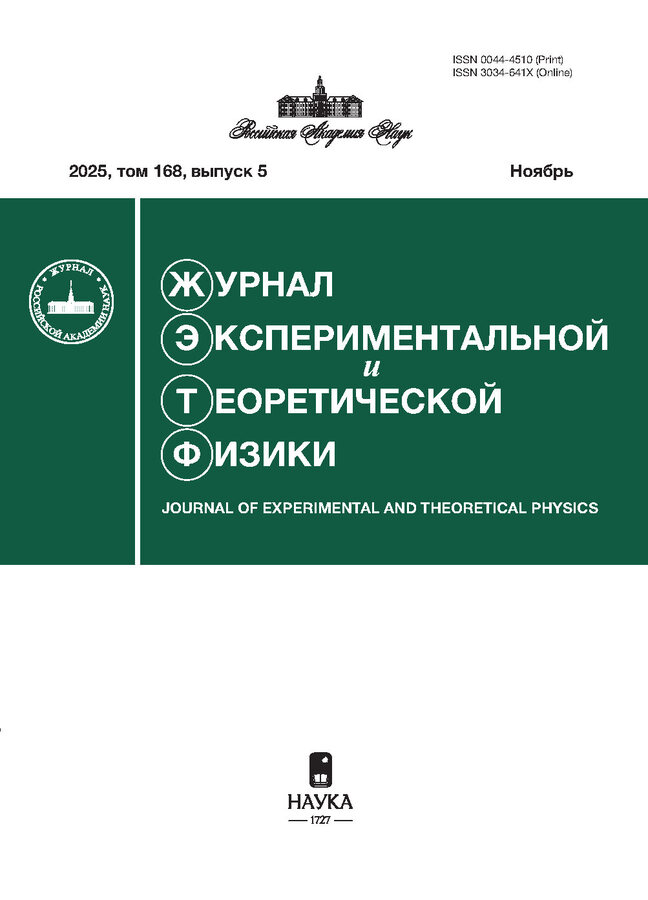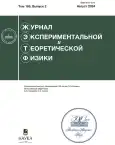FABRICATION AND STUDY OF THE p − Si/α − Si/Ag MEMRISTOR CROSSBAR ARRAY
- Authors: Samsonova A.1, Yegiyan S.1, Klimenko O.1,2, Antonov V.N.1, Paradezhenko G.1, Prodan D.1, Pervishko A.1, Yudin D.1, Brilliantov N.1
-
Affiliations:
- Skolkovo Institute of Science and Technology
- P.N. Lebedev Physical Institute of the Russian Academy of Siences
- Issue: Vol 166, No 2 (2024)
- Pages: 255-260
- Section: Articles
- URL: https://journals.rcsi.science/0044-4510/article/view/261690
- DOI: https://doi.org/10.31857/S004445102408011X
- ID: 261690
Cite item
Full Text
Abstract
We study the formation of the conductive channels in α-Si memristors and demonstrate their operation in the crossbar array. The latter can be utilised as the basic component of the neuromorphic chip tailored for edge computing. The conductive channels in α-Si are formed by the migration of Ag along with Cu ions. Such a channel has switching current-voltage characteristics at high bias, Vbias > 2V, and highly non-linear that at low bias, Vbias < 0.5V. Memristor can be re-programmed to different resistance states with short voltage pulses of amplitude above 2 V. We demonstrate the programming of the memristor crossbar array and its operation in vector-by-matrix multiplication with an 87% accuracy.
About the authors
A. Samsonova
Skolkovo Institute of Science and Technology
Email: alena.samsonova@skoltech.ru
Russian Federation, 121205, Moscow
S. Yegiyan
Skolkovo Institute of Science and Technology
Email: alena.samsonova@skoltech.ru
Russian Federation, 121205, Moscow
O. Klimenko
Skolkovo Institute of Science and Technology; P.N. Lebedev Physical Institute of the Russian Academy of Siences
Email: alena.samsonova@skoltech.ru
Russian Federation, 121205, Moscow; 119991, Moscow
V. N. Antonov
Skolkovo Institute of Science and Technology
Email: alena.samsonova@skoltech.ru
Russian Federation, 121205, Moscow
G. Paradezhenko
Skolkovo Institute of Science and Technology
Email: alena.samsonova@skoltech.ru
Russian Federation, 121205, Moscow
D. Prodan
Skolkovo Institute of Science and Technology
Email: alena.samsonova@skoltech.ru
Russian Federation, 121205, Moscow
A. Pervishko
Skolkovo Institute of Science and Technology
Email: alena.samsonova@skoltech.ru
Russian Federation, 121205, Moscow
D. Yudin
Skolkovo Institute of Science and Technology
Email: alena.samsonova@skoltech.ru
Russian Federation, 121205, Moscow
N. Brilliantov
Skolkovo Institute of Science and Technology
Author for correspondence.
Email: alena.samsonova@skoltech.ru
Russian Federation, 121205, Moscow
References
- J. J. Yang, D. B. Strukov, and D. R. Stewart, Memristive Devices for Computing, Nature Nanotechnology 8, 13 (2012).
- Krestinskaya, A. P. James, and L. O. Chua, Neuromemristive Circuits for Edge Computing: A Review, IEEE Trans. on Neural Networks and Learning Systems 31, 4 (2020).
- D. Marković, A. Mizrahi, D. Querlioz, and J. Grollier, Physics for Neuromorphic Computing, Nature Rev. Phys. 2, 499 (2020).
- R. Yang, P. Gao, S. Gaba, et al., Observation of Conducting Filament Growth in Nanoscale Resistive Memories, Nature Commun. 3, 732 (2012).
- V. Emelyanov, K. .E. Nikiruy, V. A. Demin, et al., Yttria-Stabilized Zirconia Cross-Point Memristive Devices for Neuromorphic Applications, Microelectronic Engineering 215, 110988 (2019) 6. J. Woo and S. Yu, Resistive Memory-Based Analog Synapse: The Pursuit for Linear and Symmetric Weight Update, IEEE Nanotechnology Magazine 12, 36 (2018)
- Yeon, P. Lin, C. Choi, et al., Alloying Conducting Channels for Reliable Neuromorphic Computing, Nature Nanotechnology 15, 574 (2020).
- Д. В. Ичёткин, М. Е. Ширяев, Д. В. Новиков, и др., Многоуровневые мемристорные структуры на основе a-Si с повышенной устойчивостью резистивного переключения и малыми токами потребления, Письма в ЖТФ 49, 39 (2023).
- D. McBrayer, R. M. Swanson, T. W. Sigmon, Diffusion of Metals in Silicon Dioxide, J. Electrochem. Soc. 133, 1242 (1986).
- F. Rollert, N. A. Stolwijk, H. Mehrer, Solubility, Diffusion and Thermodynamic Properties of Silver in Silicon, J. Phys. D: Appl. Phys. 20, 1148 (1987).
- Z. Ma, J. Ge, W. Chen, et al., Reliable Memristor Based on Ultrathin Native Silicon Oxide, ACS Applied Materials and Interfaces 14, 21207 (2022).
- A. Istratov, E. R. Weber, Physics of Copper in Silicon, J. Electrochem. Soc. 149, G21 (2002).
- Ren, S. Liu, R. Cai, et al., Algorithm-Hardware Cooptimization of the Memristor-Based Framework for Solving Socp and Homogeneous Qcqp Problems, 2017 22nd Asia and South Pacific Design Automation Conference (ASPDAC), IEEE (2017).
- Xia and J. J. Yang, Memristive Crossbar Arrays for Brain-Inspired Computing, Nature Materials 18, 309 (2019).
- Yakopcic, T. M. Taha, G. Subramanyam, R. E. Pino, and S. Rogers, A Memristor Device Model, IEEE Electron Device Lett. 32, 1436 (2011).
- Konlechner, A. Allagui, V. N. Antonov, and D. Yudin, A Superstatistics Approach to the Modelling of Memristor Current–voltage Responses, Phys. A: Statistical Mechanics and its Applications 614, 128555 (2023).
- P. G. Le Comber and W. E. Spear, Electronic Transport in Amorphous Silicon Films, Phys. Rev. Lett. 25, 509 (1970).
- Joshi, and J. M. Acken, Sneak Path Characterization in Memristor Crossbar Circuits, Int. J. Electronics 108, 1255 (2020).
Supplementary files










